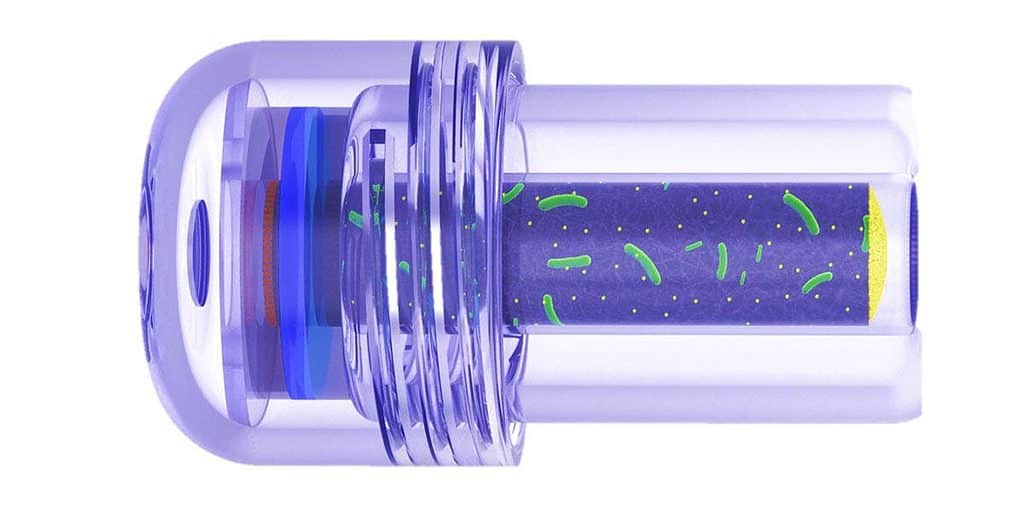Imagine sending a robot to patch up an injury inside a patient’s stomach, deliver a drug, or help with a diagnosis. That possibility isn’t far-fetched, but a major issue that prevents us from using tiny machines and cameras inside the human body for medical purposes is that we don’t have batteries to power them.
That may soon change. A team of researchers at Binghamton University has developed an ingestible biobattery that can power medical equipment which is deployed in “hard-to-reach” parts of the small intestine.

The future is coming — not content with simply administering pills or other regular forms of medicine, researchers are increasingly looking at more hi-tech ways to fight disease from inside the human body, or just get a good view of them.
“There are some regions in the small intestine that are not reachable, and that is why ingestible cameras have been developed to solve this issue. They can do many things, such as imaging and physical sensing, even drug delivery,” one of the study authors and a professor at Binghamton University, Seokheun Choi said in a press release. But it’s not an easy task. “The problem is power. So far, the electronics are using primary batteries that have a finite energy budget and cannot function for the long term.”
The problems with existing power sources
Conventional batteries are composed of materials like lead, cobalt, manganese, graphite, and nickel. These materials are detrimental to human health and can cause problems ranging from stomach aches to liver and kidney damage. So even if we manage to make powerful and small batteries for medical equipment, there will always be health risks associated with them. It would be far better to use a different type of non-toxic battery.
Another idea is to use wireless power. Many of us charge our smartphones and various other gadgets using wireless chargers so why can’t we power drug delivery robots in the same manner? Previously in 2018, a team of researchers at MIT developed a method to power device implants in the human body using radio frequency waves. Surprisingly, this approach allowed the researchers to control and communicate implants without using any batteries.
However, wireless power transmission technology is still in its developing phase. It will take some time before scientists come up with an effective and feasible solution to power all kinds of medical applications that are supposed to work inside the human body for longer durations.
How the biobattery is different?
The proposed biobattery on the other side is something that can be implemented right away because it uses the power of nature. It comprises inactive Bacillus subtilis bacteria spores that become active as soon as they reach the small intestine and start producing small amounts of electricity.
Generally, B. subtilis functions as a probiotic in the human body as it supports the growth of friendly microorganisms such as lactic acid bacteria and prevents the occurrence of foodborne diseases. However, Professor Choi and his team use them not as probiotics but as microbial fuel cells. The inert spores of the bacteria as fuel cells are put inside a pH-sensitive case which is the size of a capsule and this whole setup can together function as a battery for ingestible medical applications.
This pH-sensitive material keeps the cells inactivated while the capsule travels from the mouth to the stomach and other parts of the body where the pH is low. As the capsule reaches the small intestine, the material senses the increased pH (6 to 7.4), and this change in the surrounding activate the spores inside the capsule.
The spores germinate and as the bacteria perform normal biological functions inside the capsule, as a result of the microbial activity inside the capsule electricity is produced. This electricity can be used to power any connected medical equipment.
“As a proof-of-concept demonstration in stimulated intestinal fluid, the biobattery capsule produces a current density of 470 µA cm−2 and a power density of 98 µW cm−2, ensuring its practical efficacy as a novel and sole power source for ingestible applications in the small intestine,” the researchers note.
A biobattery can currently generate 100 microwatts of power per square centimeter. The researchers plan to increase its power density by 10 times to make it viable for mainstream usage. Although the current biobattery can be deployed only inside the small intestine, the researchers suggest that similar biobatteries can be developed in the future for other parts of the body as well.
The best part is — unlike conventional batteries, there is no health risk or energy limitations associated with bio batteries. They represent a completely safe, natural, and durable way to power medical devices inside the human body.
The study is published in the journal Advanced Energy Materials.



